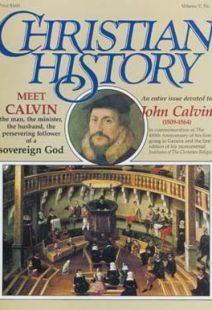From the Archives: On the Advantages of an Inventory of Relics
We don’t normally look to Calvin for biting satire, but few things got him so riled as the tendency of the Church to veer from the worship of Christ. Thus, he produced a most entertaining treatise, excerpted here.
ADMONITION
IN WHICH IT IS SHOWN HOW ADVANTAGEOUS IT WOULD BE FOR CHRISTENDOM THAT THE BODIES AND RELICS OF SAINTS WERE REDUCED TO A KIND OF INVENTORY, INCLUDING THOSE WHICH ARE SAID TO EXIST, AS WELL IN ITALY AS IN FRANCE, GERMANY, SPAIN, AND OTHER COUNTRIES.
Augustine, in his work, titled, On the Labour of Monks, complaining of certain itenerant impostors, who, as early as his day, plied a vile and sordid traffic, by carrying the relics of martyrs about from place to place, adds, “If, indeed, they are relics of martyrs.” By this expression, he intimates the prevalence, even in his day, of abuses and impostures, by which the ignorant populace were cheated into the belief, that bones gathered here and there were those of saints. While the origin of the imposture is thus ancient, there cannot be a doubt that in the long period which has since elapsed, it has exceedingly increased, considering, especially, that the world has since been strangely corrupted, and has never ceased to become worse, till it has reached the extreme wherein we now behold it. But the first abuse, and, as it were, beginning of the evil, was, that when Christ ought to have been sought in his Word, sacraments, and spiritual influences, the world, after its wont, clung to his garments, vests, and swaddling-clothes; and thus overlooking the principal matter, followed only its accessory. The same course was pursued in regard to apostles, martyrs, and other saints. For when the duty was to meditate diligently on their lives, and engage in imitating them, men made it their whole study to contemplate and lay up, as it were in a treasury, their bones, shirts, girdles, caps, and similar trifles . . . .
But in this short treatise, I am not able to accomplish what I particularly desire, for it would be necessary to obtain catalogues from all quarters, that it might be known what relics are said to exist in every separate place, so that they might be compared with each other. In this way it would be made manifest that every Apostle has more than four bodies, and every Saint two or three. The same thing would appear in other instances; in short, when the whole heap was collected, there is no man who would not be amazed at seeing how ridiculously the whole world had been blinded. . . .
It was said, that in this city there was an arm of St. Anthony. While enclosed in its case, all kissed and worshipped it, but when brought forward into view, it proved to be a nameless part of a stag. On a certain great altar lay part of the brain of St. Peter. So long as it was in its case no man doubted,—for it would have been blasphemy not to credit the name,—but when the nest was shaken up, and observed more accurately, it turned out to be a pumice-stone. I might give many similar examples, but these will suffice to show what rubbish would be brought to light, if all the relics throughout Europe were carefully visited, provided it were done with prudence and discrimination. For some persons, when certain relics are exhibited, close their eyes from superstition, and so seeing, see not. I mean, they dare not examine in earnest, so as carefully to ascertain what they are. Thus many who give out that they have seen the entire body of Claud, or some other saint, never ventured to raise their eyes so as to see what it was. But any one who had the liberty of a private inspection, and would dare to use it, would speak very differently. The same may be said of the head of the Magdalene which is shown at Marseilles with a bit of pitch or wax attached to the eye. It is treasured up like some god that has drops from heaven, but were it examined, the cheat would easily be detected . . .
By John Calvin
[Christian History originally published this article in Christian History Issue #12 in 1986]
Next articles
Support us
Christian History Institute (CHI) is a non-profit Pennsylvania corporation founded in 1982. Your donations support the continuation of this ministry
Donate



